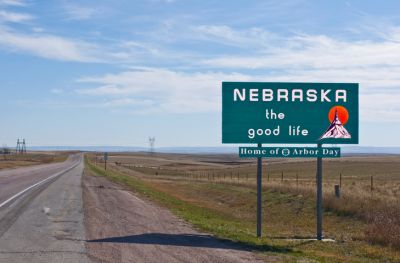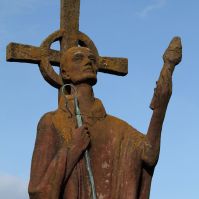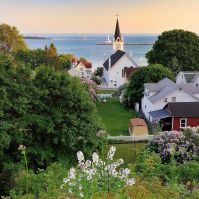 Nebraska might be most known today for its football team, but it has a lot more to offer than just corn and sports. Indigenous peoples lived in the region for centuries before the European exploration. France, Spain and Great Britain competed for dominance in the area beginning in the late 17th century, and in 1803, the territory became part of the Louisiana Purchase.
Nebraska might be most known today for its football team, but it has a lot more to offer than just corn and sports. Indigenous peoples lived in the region for centuries before the European exploration. France, Spain and Great Britain competed for dominance in the area beginning in the late 17th century, and in 1803, the territory became part of the Louisiana Purchase.
The state was accepted into the Union in 1867, and its capital was renamed Lincoln, in honor of the recently assassinated president of the United States. It’s not very often that Nebraska makes headlines, but it’s an interesting state with a lot of history. Some of the religious sites aren’t very old, but they are stunning pieces of architecture.
Hindu Temple of Omaha
Huffington Post names this center as the “Most Spiritual Place” in Nebraska. The building is an elaborate piece of architecture that fully embraces its Indian heritage. It’s the first Hindu temple in Nebraska. The temple has two distinct sections: One is the social hall and library, which was originally built in 1993. The second part is the traditional Hindu temple, which was finished in 2004.
Christ Episcopal Church, Sidney
This small church is certainly not as ornate as the Hindu Temple, but it does have a longer history. It is designed in the Shingle style, an architectural style influenced by Quakers, who eschewed ornamental-designed showpieces. Listed on the National Register of Historic Places, this church represents a significant period in Nebraska’s history.
The Holy Family Shrine, Gretna
Although this chapel of prayer isn’t a church, it’s a beautiful place to pray. The site overlooks the Platte Valley, and while it was designed to be a place for travelers to pray, rest and discover the Catholic faith, it’s open to anyone. It’s a unique building that some describe as otherworldly, especially at night. Please follow the rules of use, which protect the Shrine as a holy place.
Westminster Presbyterian Church, Lincoln
This congregation formed at the end of the 19th century, but the current church wasn’t built until 1926. The church houses some beautiful stained-glass windows that tell the story of the Holy Trinity and represent some of the most famous stories in the Bible. The Skinner Organ has to be one of the finest instruments in the United States. The congregation and the church are still growing and flourishing.
Little Church of Keystone
In 1908, the town of Keystone didn’t have enough people to justify two churches. The Presbyterians and Catholics worked together and designed a building that would allow either religion to worship. At one end, there’s a Catholic altar and at the other end, a Presbyterian one. The pews have reversible backs to allow them to face whichever altar is being used. Pope Leo XIII gave the dual faith church a dispensation. Although it no longer holds services, it is open to the public by appointment.
First Presbyterian Church, Spalding
Once known as St. Andrew Community Church, this delightful Tudor Revival style church was built in 1904. It’s now listed on the National Register of Historic Places because the “property embodies the distinctive characteristics of a type, period, or method of construction.” It has some features of the Craftsman style, which does make it stand out in the community.
First United Methodist Church, York
This church was established in 1871. The congregation outgrew their first building quite quickly, and rebuilt in another location. That church was completed in 1886. In 1895, when Nebraska was in the second year of a terrible drought, the church burned down. One year later, on the day the fire destroyed the church, its third building was dedicated. It’s a landmark in the city with its unique architecture and stained-glass windows.



